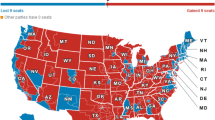Abstract
The formation of regions through spatial self-organization is a key issue in spatial economics. The standard approach to the modelling of space in regional science has been to assume that space can be modelled as a one-dimensional system, often locations arrayed on a circle. This paper studies spatial self-organization in an economic geography model defined on a two-dimensional surface, assuming periodic or quasiperiodic dynamics. A discrete time model with discretized locations is applied, motivating a cellular automata approach. Numerical simulations suggest that the number of regions emerging on a two-dimensional model is different than that on a one-dimensional model, keeping other parameters the same. The spatial distribution of economic activity on a two-dimensional space (torus) appears less stable than one on a circle. A two-dimensional economic model can be extended to capture nonuniformity in the landscape by using a quasiperiodic dynamical system.
Similar content being viewed by others
References
Dean R, Leahy W, McKee D (eds) (1970) Spatial economic theory. The Free Press, MacMillan, New York
Frankenhauser P, Peters D, Caruso G, Cavailhes J, Thomas I, Vuidel G (2008) Surprising similarities between DBM Models and an economic geography model of city growth. Presentation at ERSA 2008, Liverpool
Hale J, Kocak H (1991) Dynamics and bifurcations. Springer, New York
Heikkinen T (2008) Spatial self-organization on a two-dimensional surface. In Proc. ERSA 2008, Liverpool, UK
Hotelling H (1929) The stability of competition. Econ J 39:41–57
Krugman P (1996) The self-organizing economy. Blackwell, Cambridge, MA
Krugman P, Venables A (1995) The seamless world: a spatial model of international specialization. National Bureau of Economic Research, Working Paper 5220
Marlow W (1978) Mathematics for operations research. Dover, New York
Miyata Y, Nonaka H (2008) Urban economic model over two-dimensional continuous space – Numerical experiment. Presentation at ERSA 2008, Liverpool, UK (USB-proceedings)
Muench T (1988) Quantum agglomeration formation during growth in a combined economic/gravity model. J Urban Econ 23:199–214
Nicolis G, Prigonine I (1998) Exporing complexity: an introduction. W.H. Freeman and Company, New York
Pinto N, Antunes A (2007) Modeling and urban studies: An introduction. Archit City Environ 2(4):471–485
Thompson J, Stewart H (1994) Nonlinear dynamics and chaos. John Wiley and Sons, New York
Varian H (1984) Microeconomic analysis. Norton, New York
Wolfram S (1994) Cellular automata and complexity. Addison Wesley, Reading, MA
Author information
Authors and Affiliations
Corresponding author
Rights and permissions
About this article
Cite this article
Heikkinen, T. Spatial economic self-organization with periodic and quasiperiodic dynamics . Jahrb Regionalwiss 29, 161–183 (2009). https://doi.org/10.1007/s10037-009-0035-5
Accepted:
Published:
Issue Date:
DOI: https://doi.org/10.1007/s10037-009-0035-5




